Although it’s not long, the Fóia Trail allows us to experience many of the features that make Monchique so unique compared to the rest of the Algarve. Besides offering sweeping views that extend to the coastline, this mountainous and somewhat challenging trail takes us through green landscapes where plants from distant geological eras thrive.
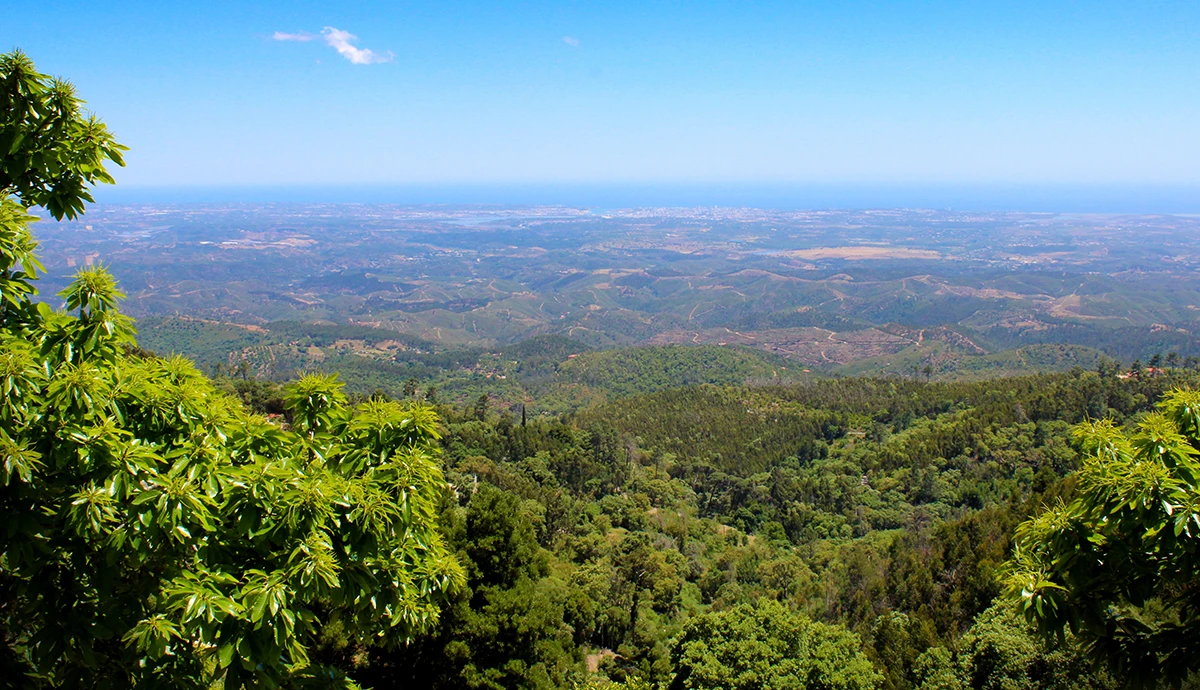
Location: Fóia summit, Monchique municipality; GPS Coordinates : N37º18’53.11″ W8º35’44.21″; Grade: medium-high difficulty; some stretches can be more difficult for elderly or very young visitors; Type: loop trail (circular route); this trail is signposted; Length: 6.8 kilometers/ 4.2 miles; Average Completion Time: up to 2.5 hours; Best Time to Visit: all year round except in rainy days; this trail is more interesting in late spring; Activities: nature walks and hikes; birdwatching.
There are walking trails in the Algarve that surround us with beauty from the first steps. This is what happens with the Ludo Trail or the Seven Hanging Valleys Trail , for instance. But this is not the case with the Fóia Trail. Marked by the presence of metallic towers, the beginning of this hike looks dull and unpromising.
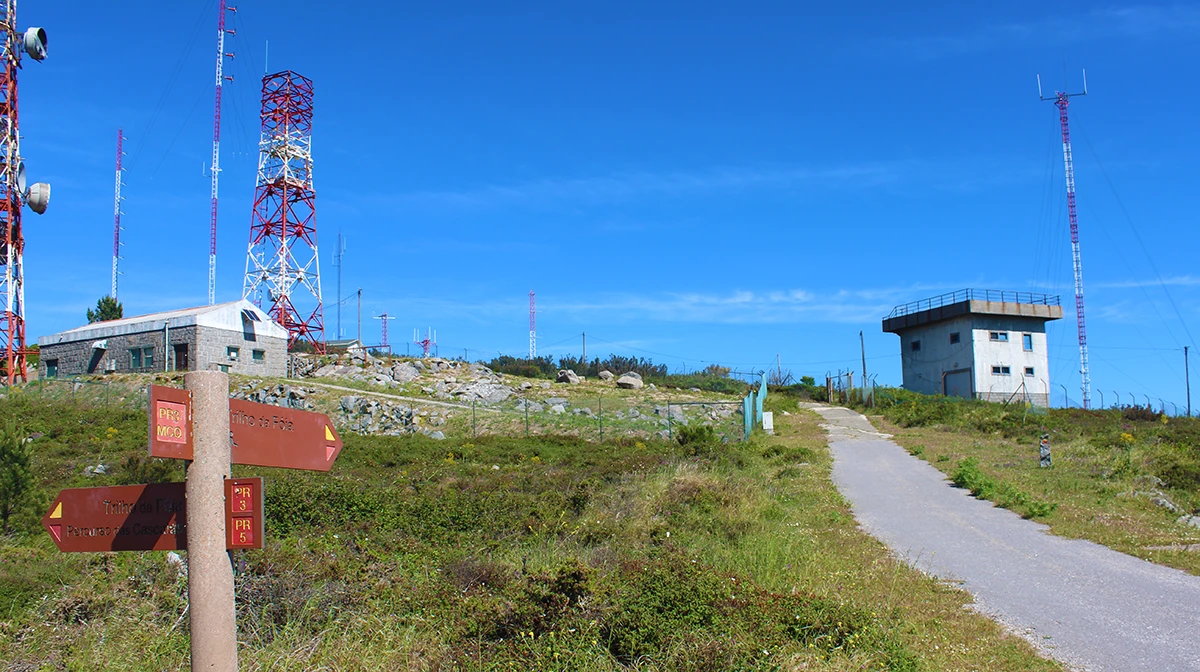
However, like Ravel’s Bolero, it gradually becomes livelier and more enlightening. And even more so during late spring, when the rare Pontic Rhododendrons blossom and a delightful multitude of butterflies grace the trail, their vibrant colours and delicate movements adding to the beauty and charm of the hiking experience.
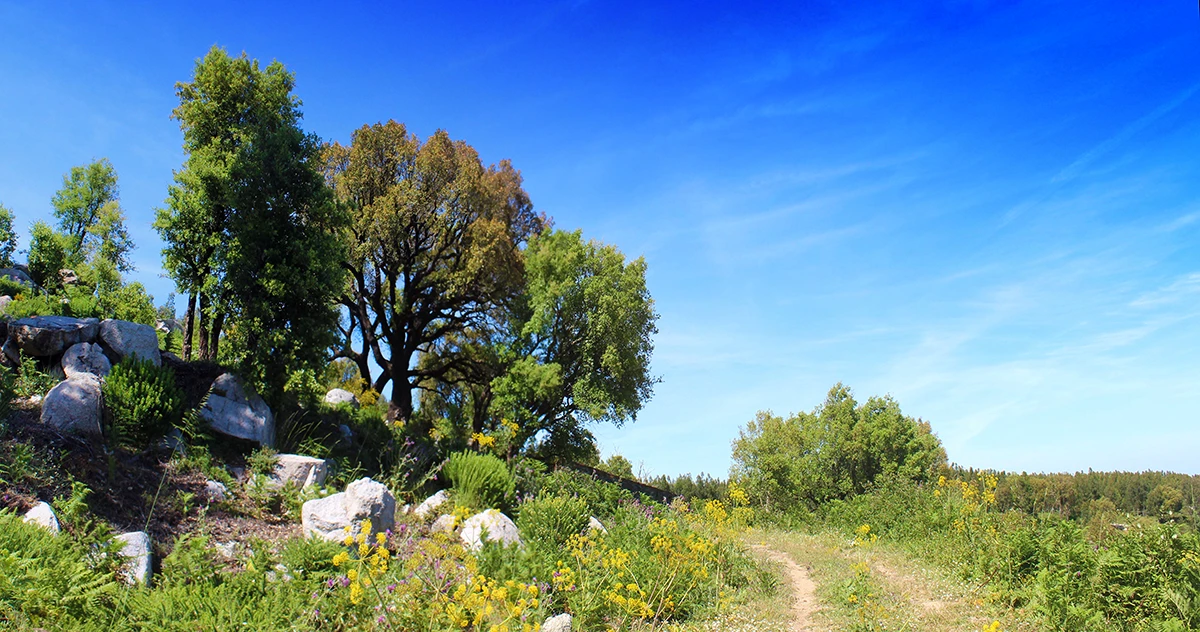
Unfortunately, one segment of the Fóia Trail requires walking along a paved road with constant motorized traffic. This is necessary to reach the more pleasant and atmospheric areas situated to the east. These prettier areas span wide terraces that open up to the distant southern horizon. When the weather is clear, you can see the rich coastline of the Algarve, from Faro in the east to the iconic Ponta da Piedade in the west. Shown below in the distance, the white city of Portimão occupies a large part of the centre stage.
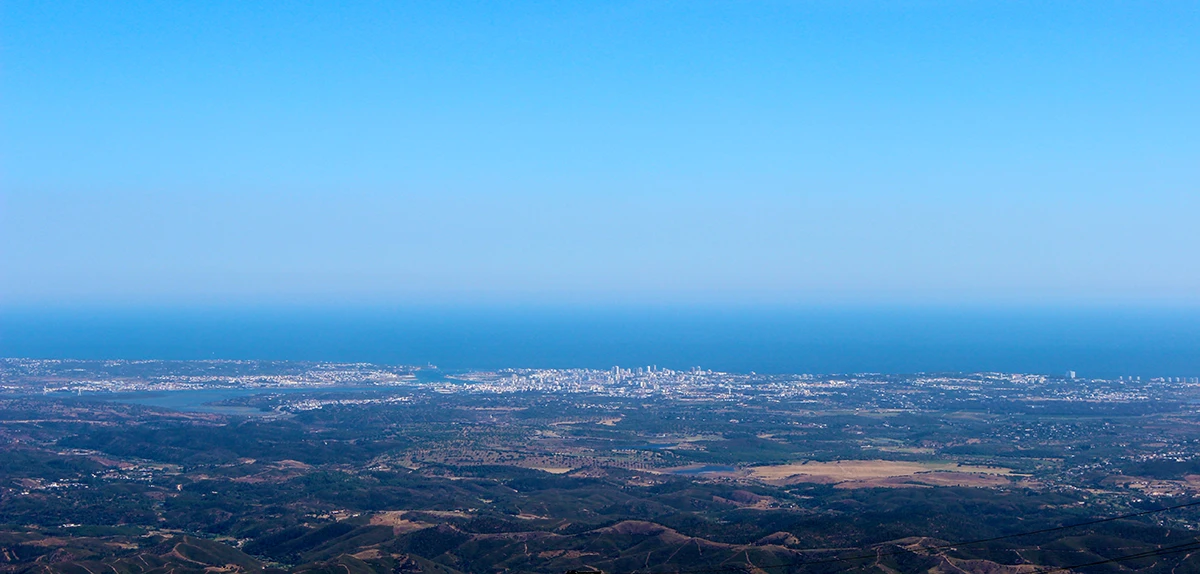
In addition to Pine, Eucalyptus, and Cork Oak trees, there are many fruit trees across these terraces, such as Chestnut, Fig, Cherry, Orange, and Peach trees. This is due to the geological richness and fertility of the soil, as well as the abundance of water. In fact, except during the summer, large parts of the trail are often covered by water flowing from the mountain’s highest points. These sections can become muddy and slippery, so it’s advisable to wear waterproof shoes that are easy to clean and provide good grip on the terrain.
Since the Fóia Trail follows a circular route, you can walk it in either direction. The choice depends on your goals. However, if you’d prefer to start with the less pleasant segments and finish with the more enjoyable and scenic parts, please follow the route marked with the arrow on the included map above. This path, which goes uphill and to the right, will take you near the telecommunications towers. Just follow the painted signs along the trail and you won’t get lost, if you don’t want to…
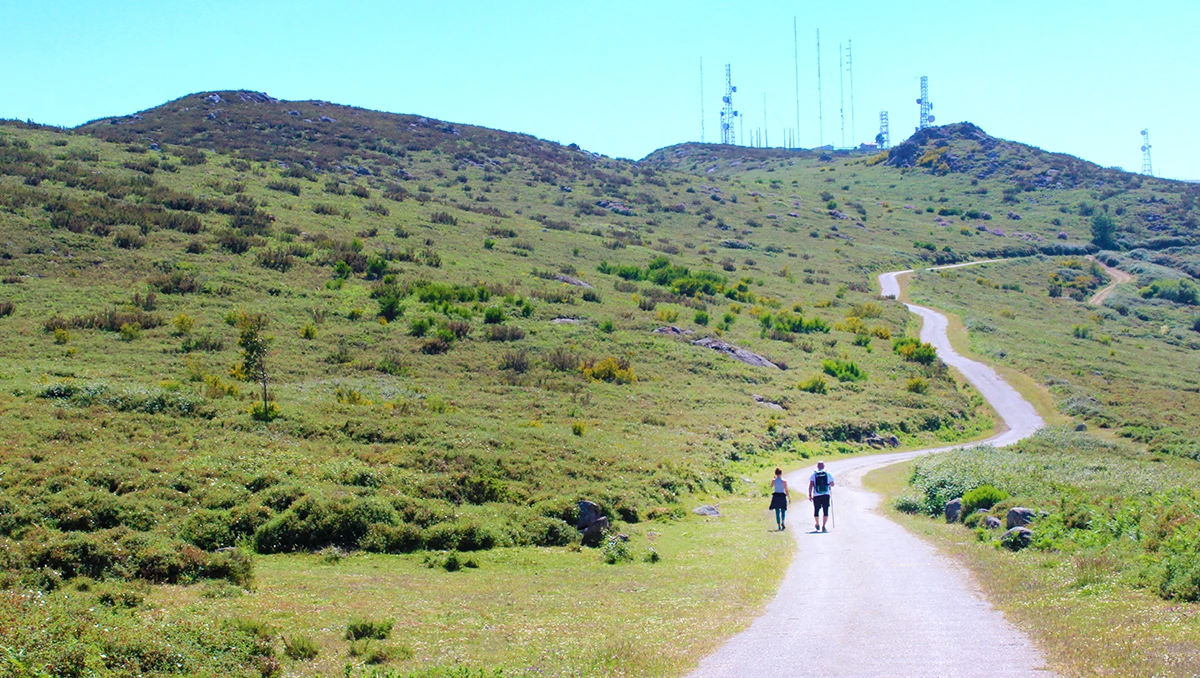
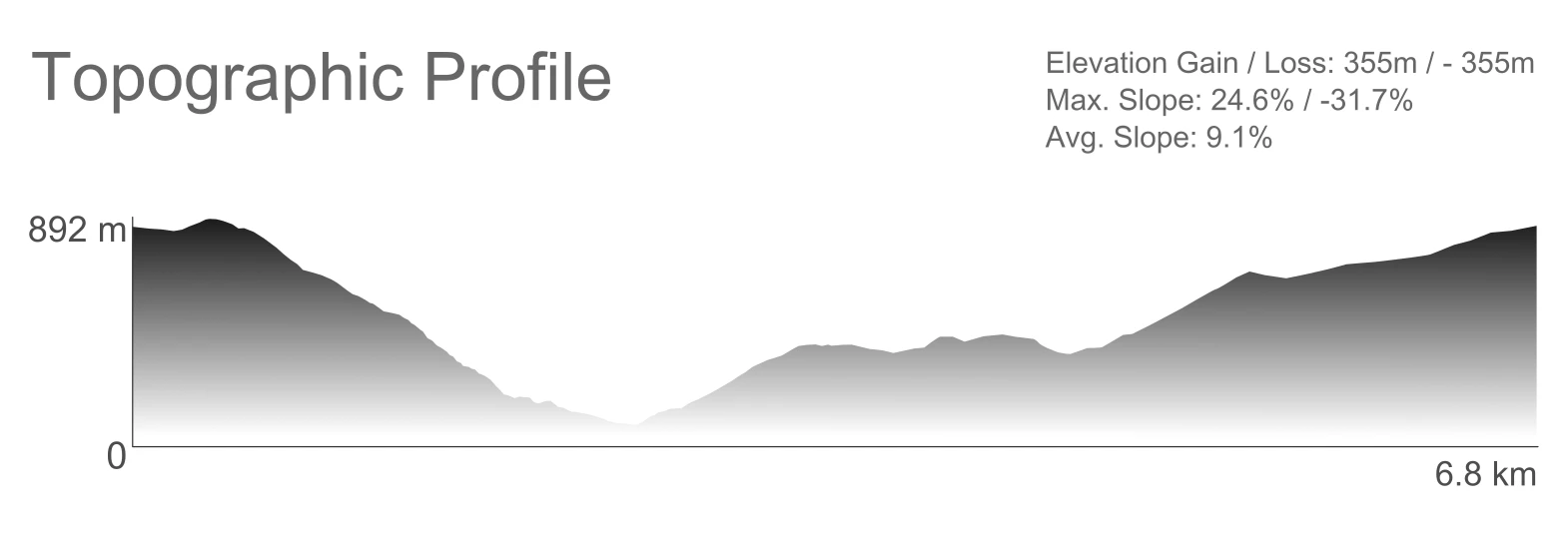
Although snowfall is very uncommon in the Algarve, it is most likely to happen in Fóia. Frost, however, is quite common on Fóia’s northern side, where the low temperatures needed for a good apple harvest usually occur every year.
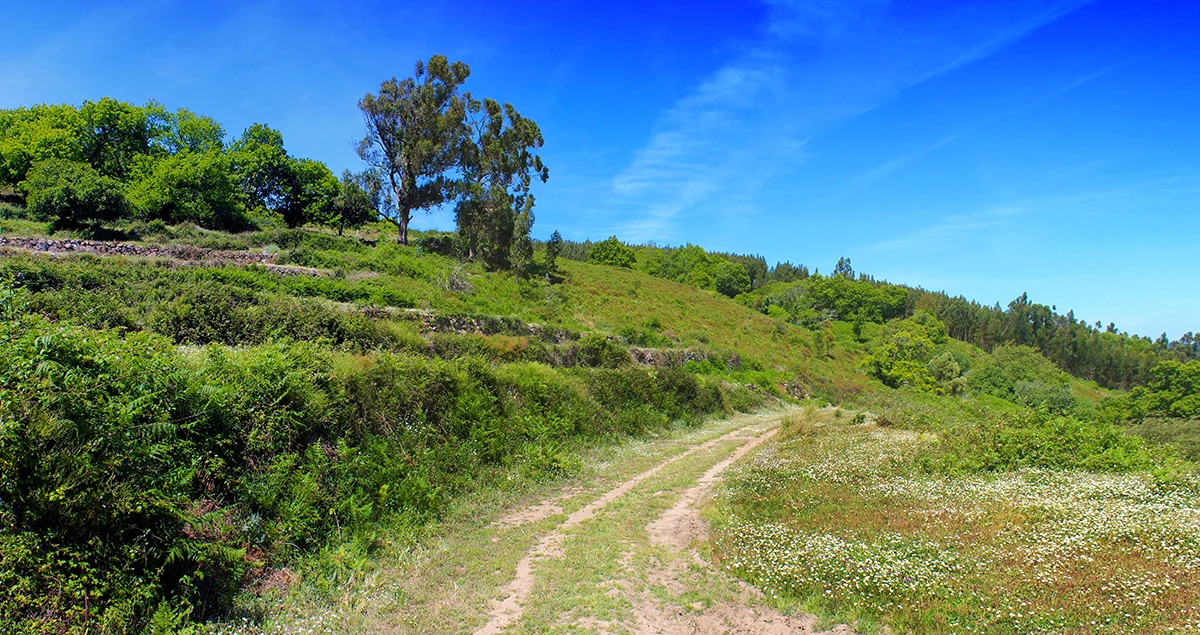
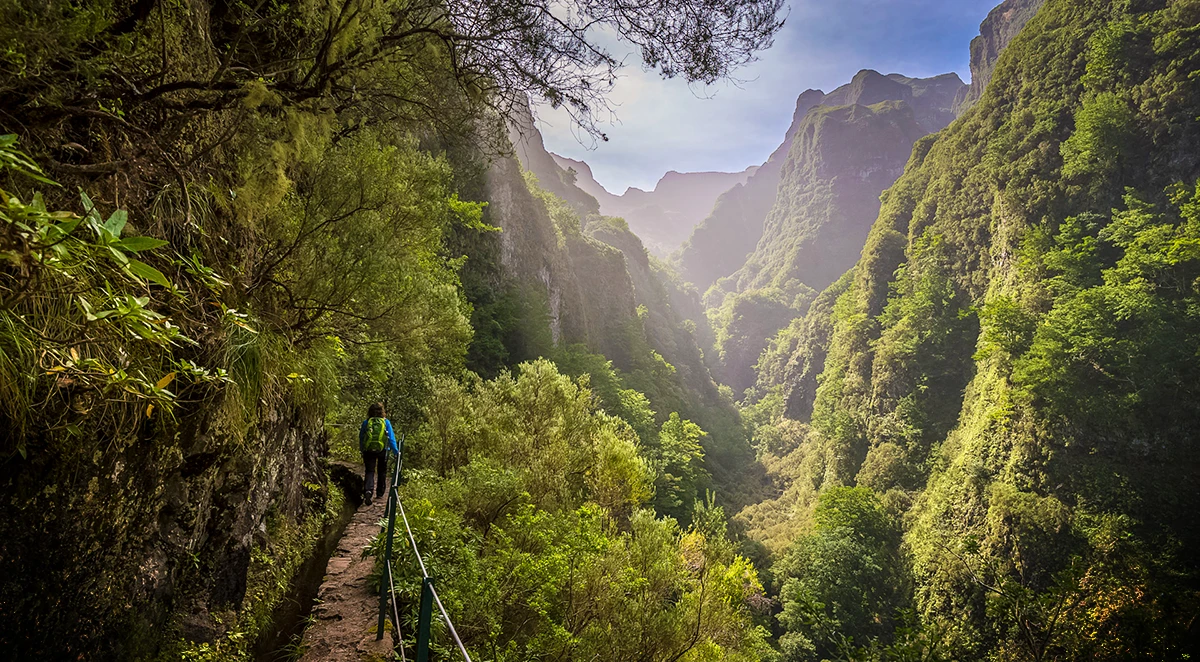
However, in mainland Portugal, you can still find species from this ancient forest. Some of these species can be seen on the Fóia Trail, such as the Strawberry Tree (Arbutus unedo), Bay Laurel (Laurus nobilis), Firetree (Myrica faya), and a very rare and endangered subspecies of Pontic Rhododendron (Rhododendron ponticum subsp. baeticum) – left to right on the image below.
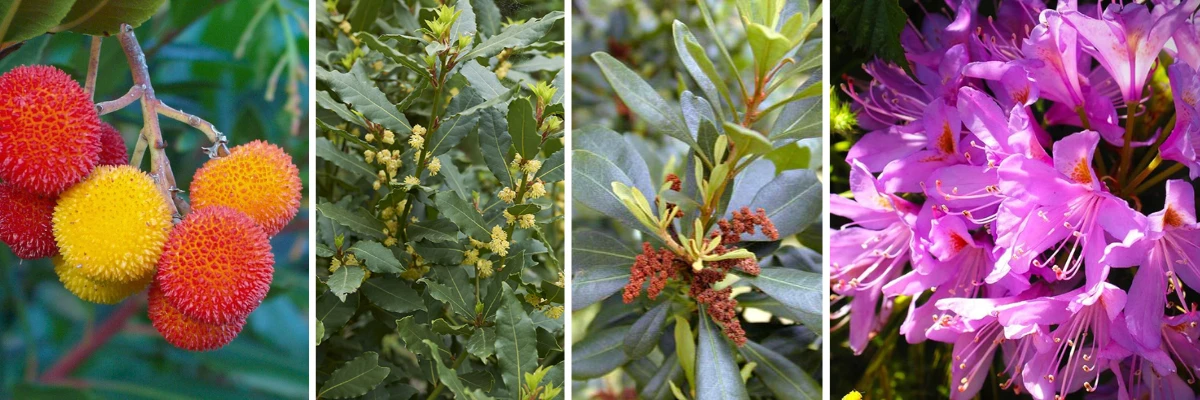
The Pontic Rhododendron is considered a precious ‘relic species’ because it survived from the time when Monchique had a subtropical climate. Fortunately, its habitat is now being restored as part of a joint Iberian project. This subspecies survives only in certain areas of Portugal and one area in southern Spain.
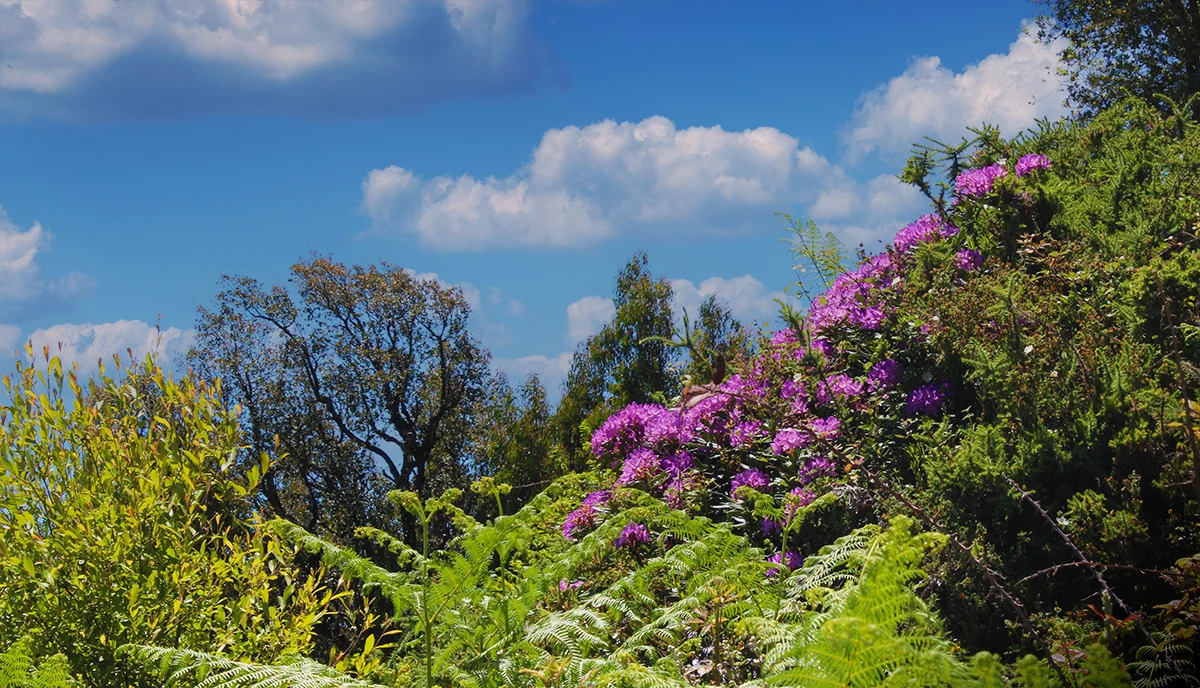
The Pontic Rhododendron is a toxic plant, but it has beautiful purple flowers that bloom in late spring. If you appreciate ancient botanical relics, the Fóia Trail (and other trails in Monchique) offers a chance to see the large floral clusters of this significant subspecies between late April and early June, with peak bloom in May. Enjoy!